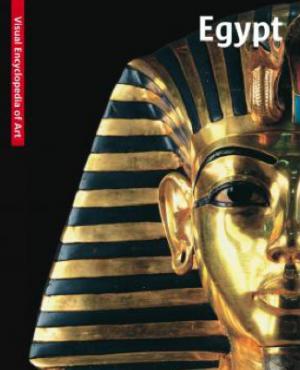
Egypt

The Visual Encyclopedia of Art
ISBN 9781566499705 (paperback)
Published in August 2012
No civilization has left such imposing and fascinating vestiges as that of Egypt, and yet so little trace of the “human.” In ancient Egypt art was not an expression of the human world but a living and active representation of the act of creation.
The extreme and forceful nature of the Nile Valley—where the fertile plain runs without a break into the desert, and the annual flooding erases the landscape in a relentless cycle as it brings new life—has shaped Egyptian art. It is in the first place a direct emanation of the divine, and as such proposes the order established by the gods with mathematical rigor and in strictly codified canons. Religion was everything and everything was religion in ancient Egypt. Art had no aesthetic value in this world. Art was a symbol of nature; it has to capture its essence rather than imitate it, and left no freedom or independence of expression to the individual. The works that adorn temples, palaces, and tombs always have a magical function: They are intended to protect. Thus they are not an imitation of nature. On the contrary, they are alive and potent. The magical and religious conception that inspired these artist-creators can still be perceived today, even when their works have been transported to lands faraway from the blazing sun of the African desert. Even inside the showcases of museums they still speak of a natural world inhabited by human beings, but one that has been created by a divinity that pervades it through and through—a world where humanity and its art represent the pinnacle of divine creation.
The extreme and forceful nature of the Nile Valley—where the fertile plain runs without a break into the desert, and the annual flooding erases the landscape in a relentless cycle as it brings new life—has shaped Egyptian art. It is in the first place a direct emanation of the divine, and as such proposes the order established by the gods with mathematical rigor and in strictly codified canons. Religion was everything and everything was religion in ancient Egypt. Art had no aesthetic value in this world. Art was a symbol of nature; it has to capture its essence rather than imitate it, and left no freedom or independence of expression to the individual. The works that adorn temples, palaces, and tombs always have a magical function: They are intended to protect. Thus they are not an imitation of nature. On the contrary, they are alive and potent. The magical and religious conception that inspired these artist-creators can still be perceived today, even when their works have been transported to lands faraway from the blazing sun of the African desert. Even inside the showcases of museums they still speak of a natural world inhabited by human beings, but one that has been created by a divinity that pervades it through and through—a world where humanity and its art represent the pinnacle of divine creation.